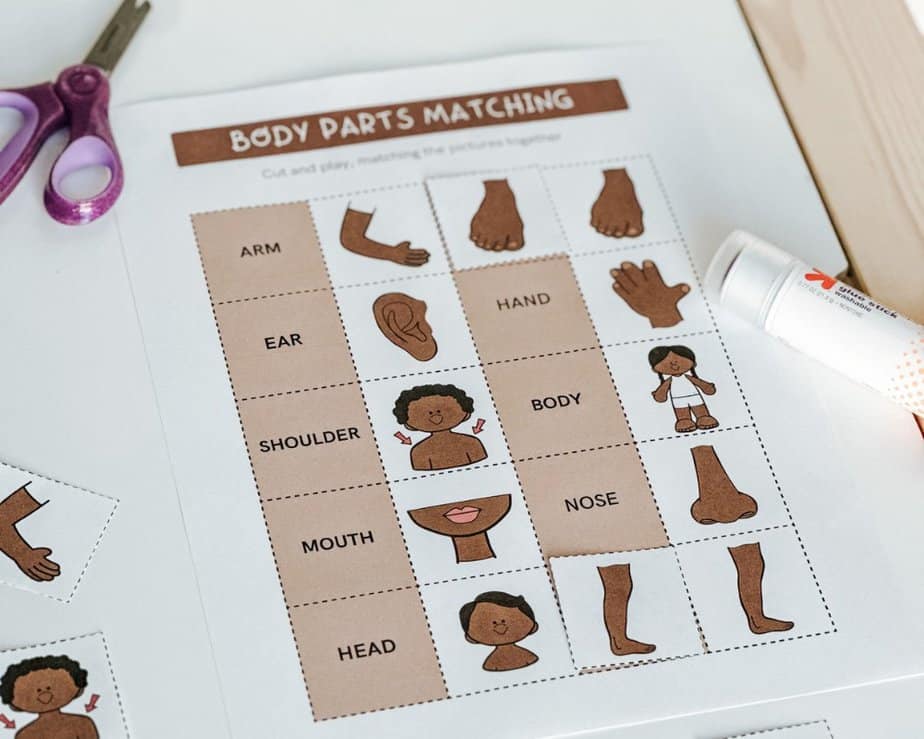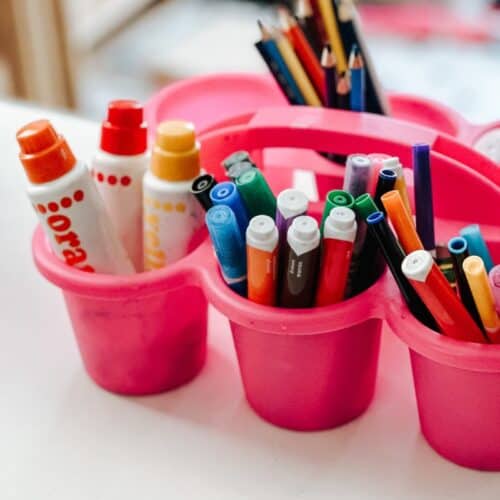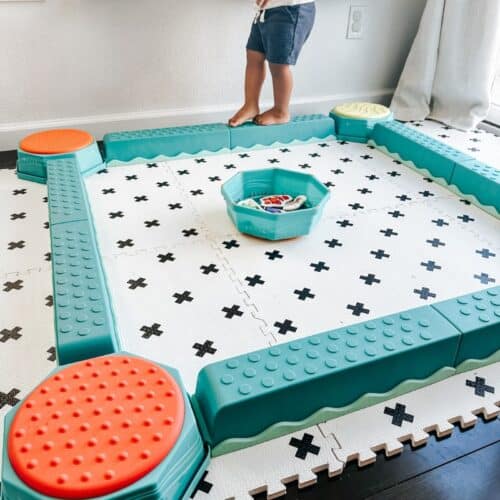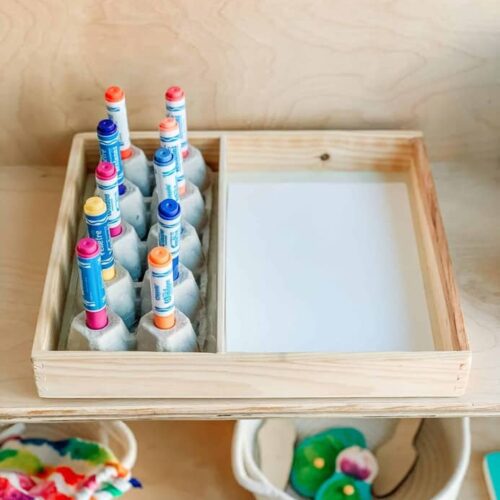Looking for a simple and engaging activity to teach preschoolers about body parts? Here is a simple Body Parts Matching Activity that is fun and engaging! This activity is a cut, paste, and match activity that’s perfect for teaching body parts to preschoolers.
Perfect for both classroom and home settings, this activity is low-prep and fun!

Affiliate Disclaimer: This post may contain affiliate links, which means I receive a small commission if you purchase through my links at no additional cost!

Body Parts Preschool Activities
How To Teach Toddlers Body Parts: 3 Easy Tips
Are you looking to teach your toddler their body parts? If so, you have come to the right place. Deciding to teach your toddler body parts is exciting!
From the time that children are born, they become more aware of their bodies over time. Take a newborn, for example, not long after birth. Most newborns realize those little hands and sometimes feet!
Another post You May Like:
1. When To Start – Timeline
There really isn’t a specific age to start teaching little ones their body parts. However, I recommend you start early, even as early as 6 months!
Consistency is the key. Starting early really gets little ones familiar with the words. Over time they will begin to recognize the words and repeat them at some point.
1 to 1.5 years old: Might be able to identify 1 to 3 body parts when asked.
2 to 2.5 years old: May be able to identify the following baby parts when asked ( eyes, head, nose, ears, mouth, feet, tummy, hands)
3 to 3.5 years old: May be able to identify and say these body parts ( chin, arm, shoulders, knees, back, neck, eyes, head, nose, ears, mouth, feet, tummy, hands )

2. Which Body Parts Should You Teach First?
If your toddler is interested in learning different body parts, you could start by teaching them those body parts first. It’s always good to follow your child’s interest when learning new skills.
Here is a list of body parts you could start with;
| Eyes | Head |
| Ears | Nose |
| Mouth | Stomach |
| Legs/ Arms | Toes |
| Hands | Feet |

3. List of Activity Ideas For Teaching BodyParts
- Sing Songs: Use classics like “Head, Shoulders, Knees, and Toes” to teach body parts through movement and repetition
- Body Parts Matching Game: Create or use matching cards where children pair body part pictures with their names or point to the correct body part on themselves.
- Simon Says: Play a game of “Simon Says,” instructing kids to touch different body parts like their nose, elbow, or ears.
- Play with Dolls or Stuffed Animals: Have children point out or name the body parts on their favorite toys.
- Mirror Play: Stand in front of a mirror and have kids point to body parts on themselves, saying each part out loud.
- Art Projects: Trace each child’s body on a large piece of paper and label the parts together, or make paper puppets to point out parts.
- Body Part Puzzles: Use puzzles where children assemble pieces to form a complete human figure, learning each part along the way.
- Sticker Fun: Give kids stickers to place on their knees, shoulders, or other body parts when prompted.
- Storytime with Body Books: Read books that feature body parts and engage the child by having them point to their own as you read.
- Body Part Bingo: Make a bingo game where kids mark off body parts as you call them out, with pictures to help
- Bath Time Learning: Use bath crayons to draw on body parts or talk about them while washing up, like “Let’s wash your hands!”
- Flashcards with Movement: Show a flashcard and have the child move or touch the corresponding body part.
- Body Part Rhymes: Makeup rhymes or chants that emphasize different body parts, encouraging the child to move along.


